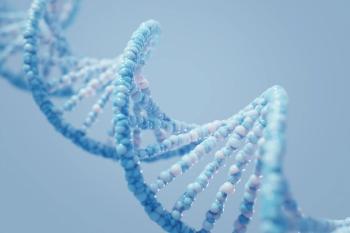
Bread and Butter Dermatology: Questions Pediatricians Often Ask (Video)
In this 10 minute video, Dr. Ted Rosen addresses the following questions. A brief synopsis of Dr. Rosen’s comments follows.
In this 10 minute
• Is TMP/SMX effective therapy for headlice?
It’s a reasonable treatment …. it works when lice take a blood meal and the antibiotic gets into their system, which interrupts their life cycle. Remember, of course, that you are feeding a very potent antibiotic to a child. And keep in mind that TMP/SMX is the antibiotic most commonly associated with toxic epidermal necrolysis, Stevens Johnson syndrome, and erythema multiforme.
• Do you use fusidic acid for impetigo?
In the US, this is not an approved topical therapy for impetigo. Are there better alternatives.
• What kind of weak topical steroid would you recommend for diaper dermatitis?
You can use 1% or 2.5% hydrocortisone,.05 % desonide, or hydrocortisone butyrate (Locoid), which has a very soothing base. The latter is almost a barrier cream all by itself.
• Seborrhea of the eyelid – how best to treat?
This condition is related to hypersensitivity to Malassezia ; you can sometimes treat seborrhea of the eyelid easily with ketoconazole-(Xolegel); ketoconazole generic cream 2% (1% otc); shampoo may help when it’s in the scalp. Topical Elidel cream is a nice way to treat eczema or even seborrhea on the eyelid. Keep in mind that the patient may have eczema or contact dermatitis, not seborrhea: topical calcineurin inhibitors are an option for these disorders and work just as well as steroids.
• Do you recommend emollients for eczema?
The old emollients were meant to help the skin retain water; several new emollients are very good mimics of mimic normal lipids -CerAve lotion or cream is one example; it stays on the surface and actually goes in between the keratinocytes and through the stratum corneum, and forms barriers around the cells, which is what normal moisturing factors are supposed to do.
• Would you comment about isotretinoin for acne?
Difficulty in administration and myriad of adverse effects limit use of this therapy to patients with recalcitrant nodulocystic acne. Before I use isotretinoin, I always try minocycline, which is my ace in the hole for bad acne. There is now a time-release formulation of minocycline with fewer vestibular effects.
• Do you use doxycycline for acne?
The agent is photosensitizing; be sure to advise your patient to wear water-resistant sunscreen when he/she is to be outdoors. My favorite is Neutrogena Ultrasheer.
• Do you recommend shampoos for tinea capitis?
I use ketoconazone 2% as an adjunct to oral therapy. Just treating the scalp alone is not adequate therapy; an oral agent is needed.
• Intralesional triamcinolone injections for nodular cystic acne?
Be sure to dilute down 1 to 2 mg/cc works just as well as 3, 5, or 10 mg. Use a very small (30 gauge needle); use less than a 0.1 cc until you see just a little blanching. This approach can work quite well.
Newsletter
Access practical, evidence-based guidance to support better care for our youngest patients. Join our email list for the latest clinical updates.













